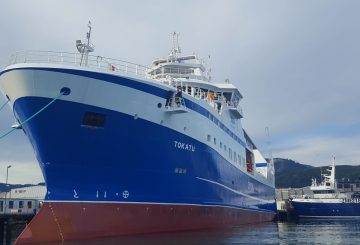Para pelajar Selandia Baru menjadi semakin khawatir akan dampak dari meningkatnya hutang mereka terhadap prospek masa depan mereka. Menurut situs web Studylink, jumlah uang yang dapat dipinjam siswa untuk biaya hidup telah meningkat lebih dari $ 100 per minggu dalam enam tahun terakhir. Pada tanggal 1 April, jumlah tersebut akan naik lebih dari $20 menjadi $302 per minggu.
Bagi mahasiswa yang meminjam jumlah maksimum yang diperbolehkan, mereka akan mendapatkan pinjaman biaya hidup lebih dari $ 15.000 per tahun. Presiden Persatuan Mahasiswa Selandia Baru (NZUSA), Ellen Dixon, mengatakan bahwa sebagian besar mahasiswa akan mengambil jumlah pinjaman secara penuh dan juga bekerja antara 30 hingga 40 jam per minggu untuk tetap belajar. Dixon mengatakan bahwa gaya hidup seperti ini tidak sehat dan para mahasiswa tidak dapat memberikan perhatian penuh pada studi mereka. Dia juga khawatir bahwa kaum muda tidak cukup terdidik tentang dampak dari hutang.
Partai Hijau setuju dan percaya bahwa mahasiswa membutuhkan lebih dari sekedar solusi “Band-Aid” untuk biaya hidup yang terus meningkat. Juru bicara Pendidikan Tersier, Chloe Swarbrick, mengatakan bahwa penelitian partai ini menunjukkan bahwa dua pertiga mahasiswa secara teratur tidak mampu membayar kebutuhan dasar seperti sewa rumah, makanan, dan tagihan listrik. Swarbrick percaya bahwa menambahkan lebih banyak uang ke dalam pinjaman hanya akan memperburuk keadaan.
Dixon mengatakan bahwa mahasiswa seharusnya tidak perlu memilih antara kuliah dan membeli rumah. Di masa lalu, rincian rinci dari kebiasaan pengeluaran pemohon bertindak sebagai penghalang bagi pembeli rumah pertama untuk mendapatkan KPR yang disetujui. Dia khawatir kita akan melihat lebih banyak hal seperti itu pada generasi mahasiswa berikutnya, terutama karena mereka terus menggunakan layanan beli sekarang bayar nanti seperti Afterpay untuk bertahan hidup.
Seorang ekonom ANZ, Miles Workman, mengatakan bahwa kenaikan upah rata-rata secara keseluruhan mungkin cukup untuk memenuhi kenaikan pinjaman mahasiswa. Namun, Workman mengatakan bahwa ada masalah yang lebih besar yang secara finansial mempengaruhi mahasiswa: sistem pensiun diatur untuk mendukung generasi yang lebih tua karena kita menjalankan sistem “bayar sesuai kebutuhan”.
NZUSA dan Partai Hijau menginginkan restrukturisasi pendidikan tinggi, dengan Swarbrick mengatakan bahwa tunjangan mahasiswa universal akan bermanfaat. Saat ini, hanya sepertiga mahasiswa yang menerima tunjangan mahasiswa sebesar $279 per minggu. Swarbrick mengatakan bahwa angka Kementerian Pendidikan terbaru dari tahun 2021 menunjukkan bahwa dibutuhkan kenaikan sekitar 22 persen dari angka tersebut untuk memberikan tunjangan mahasiswa universal.






























































